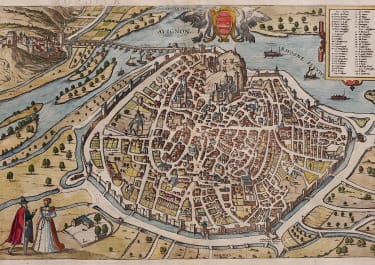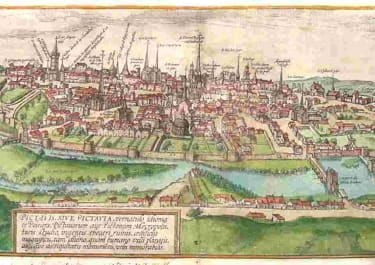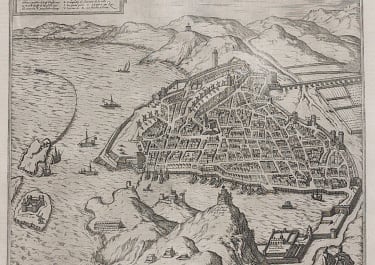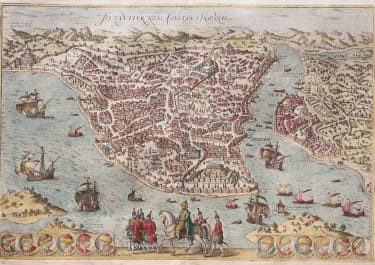ROCHELLA MUNITISSIMUM GALLIAE
£235
Good attractive important bird's-eye plan of La Rochelle .
"La Rochelle is a city in France and highly famed because of its position on the Atlantic Ocean. It is extraordinary how well-fortified it is, with massive and strong ramparts and parapets, and how astonishingly pleasant its position is. La Rochelle has been granted higher privileges and freedoms than all other cities by the kings, so that the citizens have the power to elect among themselves a mayor and aldermen, who preside over the city assiduously. They permit no outside government, no soldiers, not even a castle for their protection and defence, nor do they have any need of one; the sole exception is a tower in which they keep their instruments of war."
Uncoloured as issued
Mint condition.
From Civitates Orbis Terrarum
Ref : Van der Krogt 4, 2219; Taschen, Braun and Hogenberg, p.160.
code : M3857
Cartographer : BRAUN & HOGENBERG
Date : 1575
Size : 32*35.5 cms
availability : Available
Price : £235
Georg Braun (1541-1622) and Frans Hogenberg (1535-1590) were co-publishers of the monumental Civitates Orbis Terrarum, “the earliest systematic city atlas” (Koeman), published from 1572 onwards. Designed as a companion to Ortelius’ world atlas the Theatrum, this enormous work, which was expanded to six volumes by 1617 incorporating over 500 plans and views, must be viewed as one of the most ambitious book producing ventures of all time, and certainly, with Ortelius’ Theatrum and Blaeu’s Atlas Maior among the greatest achievements in the history of cartography.
Braun compiled the accompanying text, printed on the reverse of the engraved sheets, while the plans were engraved by Hogenberg, who had also prepared some of the maps for Ortelius’ Theatrum. Hogenberg used generally up-to-date and accurate maps, surveys and reports from local sources to compile this collection of plans and bird’s-eye views of all the major towns of Europe, some African, Middle Eastern and Indian towns, and the New World cities of Mexico and Cusco. One of the major contributors was Georg (or Joris) Hoefnagel, who supplied some 63 manuscript drawings, the vast majority from personal observation.












